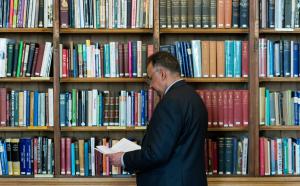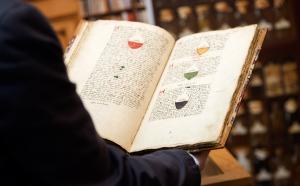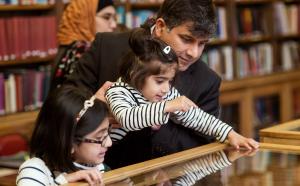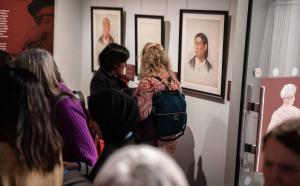
Dr Justina Wilson – the ‘forgotten’ first female Fellow of the Royal College of Physicians of Edinburgh
It’s not often these days that we make a truly astonishing discovery about the history of our College, but in late June 2025, researchers in the Heritage team made such a discovery. For as long as anyone can remember, Dr Ella Pringle has been recognised as the first female Fellow of the RCPE. A specialist in maternity and child health in Edinburgh, she passed the MRCP Edinburgh in 1925 and was elected a Fellow on the 5th February 1929. The astonishing discovery made by the researchers in the Heritage team was that a Dr Justina Wilson was elected a Fellow of the College on the 1st May 1928!
Dr Anna Justina Augusta Wilson (neé McCartie) was born in India in around 1863 (1). She was of Irish heritage and her father was an army officer who later took holy orders. She spent the first part of her life in India, but after her husband’s retirement she travelled widely in Europe.
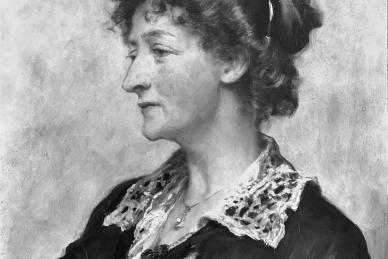
Figure 1: Painting of Wilson. Artist unknown; Date unknown. From the Wellcome Collection, London with permission from the Chartered Society of Physiotherapy
She studied ‘massage therapy’ (which, along with medical gymnastics, evolved into the field of physical medicine or physiotherapy) in Germany and Sweden. She founded her own massage school in Baker Street, London and this subsequently merged with the ‘Swedish Institute’ in Cromwell Road, of which she was the director. The Institute trained large numbers of physiotherapists and Wilson soon became a masseuse at St Bartholomew’s Hospital and became head of the department of physiotherapy.
Wilson realised that her progress and that of her work was limited by her lack of a medical qualification and so in her late forties, she became a student at the School of Medicine for Women, Royal Free Hospital, London. She obtained the Licence in Medicine and Surgery of the Society of Apothecaries (LMSSA) and became a Licentiate of the RCPE in 1916, at the age of 53; both of these were medical qualifications that could be obtained by individuals not attending a university medical school.
Her medical qualification appears to have caused issues at Bart’s and she had to leave. She established new departments of physiotherapy at both the Royal Free Hospital and St Mary’s Hospital. She passed the Diploma in Medical Radiology and Electrology (DMRE) from the University of Cambridge in 1920 and passed the MRCP Edinburgh in 1924, at the age of 61. She was the first woman to become a Member of the RCPE.

Figure 2: Photograph of Wilson. Date unknown. From the Wellcome Collection, London with permission from the Chartered Society of Physiotherapy. This photo has been edited with artificial intelligence software to sharpen the image quality.
Wilson was also the first woman to have a seat on the St Mary’s Hospital medical committee and on her retirement at the end of the Second World War (by which time she was in her eighties), she was made Consulting Physician in Physiotherapy.
Wilson was internationally recognised and had a large private practice. At the time of her death in November 1949, it was said that ‘she had treated most of the peerage’ and had ‘in her keeping the secrets of many’ (2). A key feature of her practice was ‘vigorous therapy’, but she also used conventional medicines and homeopathy. She was clearly a remarkable woman and one of her obituaries paints the following vivid portrait: ‘…she was a mass of contradictions, the most loyal of friends, the most implacable of enemies. She did not suffer fools gladly, had a caustic tongue and a devastating wit; but to those in need, or of whom she approved, she was overwhelmingly generous of her time and her means. Her colleagues were mainly men but she gave her loyal support to the relatively few women she trusted. Her capacity for work was phenomenal and she expected (and received) unstinting service from her assistants. To those who had the privilege of her friendship, even her foibles were a pleasure…her great love of the dramatic and her absolute fearlessness made her an unforgettable personality…She was a grand woman’ (2).
It is hard to understand, given all her achievements and attributes, how Wilson’s distinctions as both the first female Member and the first female Fellow of the RCPE came to be forgotten. The RCPE debated the role of women in medicine at its quarterly meeting in November 1918 and agreed ‘…to take steps to have the Constitution of the College altered or amended so as to permit of Women being admitted Fellows or Members of the College.’ It was considered that this would enhance the work of the College and encourage the advancement of medical learning and science. The necessary changes to permit election of women were incorporated into a supplementary Royal Charter in January 1920.
Wilson was proposed for the Fellowship of the RCPE on 1st November 1927 and statements in support of her application were read on 7th February 1928. Her proposer and seconder were Edwin Bramwell and Alexander Goodall respectively, two bastions of Edinburgh medicine and future presidents of the College. Her supporters included William Ritchie, another future President of the College. Wilson was introduced as a Fellow at a meeting on 17th June 1928, at the same meeting at which Pringle was proposed for the Fellowship. There was no mention that Wilson was the first female Fellow, either in this meeting or in any of the preceding meetings where her candidature was proposed, considered and approved. It is as though her gender was not considered to be a relevant matter and that Wilson was simply one of several Fellows being considered at that time. However, this is not to say that the election of a woman to the Fellowship did not go unnoticed - there were brief articles in several newspapers at the time, including the Aberdeen Press and Journal (3) and the London Evening News (4).
The first mention in Council minutes that Ella Pringle was the first female Fellow comes from the meeting on 16th July 1963, shortly after her death. By this time, Wilson had been dead for nearly 14 years and her proposer, seconder and supporters were also long dead. Pringle had worked in Edinburgh throughout her later career and presumably continued to be well known by Fellows and Members, while Wilson had been in London and potentially did not have significant ongoing contact with the College. The notice of Wilson’s death was announced at a College meeting on 7th February 1950; the opening line poignantly highlights that she was not known to the current Fellows and Members and no mention was made of her being both the first female Member and Fellow of the College, presumably because it had been forgotten.
The current Council of the College now clearly wishes to ‘right the wrong’ done to Wilson and the Heritage team will be taking steps to recognise Wilson’s contribution to medicine. The two images (one a copy of a painting and the other a photograph) shown in this article are held in the Wellcome Collection in London; copyright is owned by the Chartered Society of Physiotherapy, who have granted us permission to reproduce the images. We do not know who are Wilson’s living descendants, nor do we know the location of the original painting. We should like to make contact with her family and so if any Fellows or Members reading this article are amateur genealogists and could help us in tracing her descendants, we should be very interested to hear from you!
References
- Dr Anna Justina Wilson. British Medical Journal. 14th January 1950; p132.
- Justina Wilson F.R.C.P. L.M.S.S.A. D.M.R.E 28 November 1949. Journal of the Medical Women’s Federation. January 1950; 54–55.
- Who’s who in the feminine world. Aberdeen Press and Journal. Friday 27th July 1928; p5.
- First woman F.R.C.P. Honour for Wimpole Street Heart Specialist. Evening News Monday 16th July 1928; p5.
-
Stories

